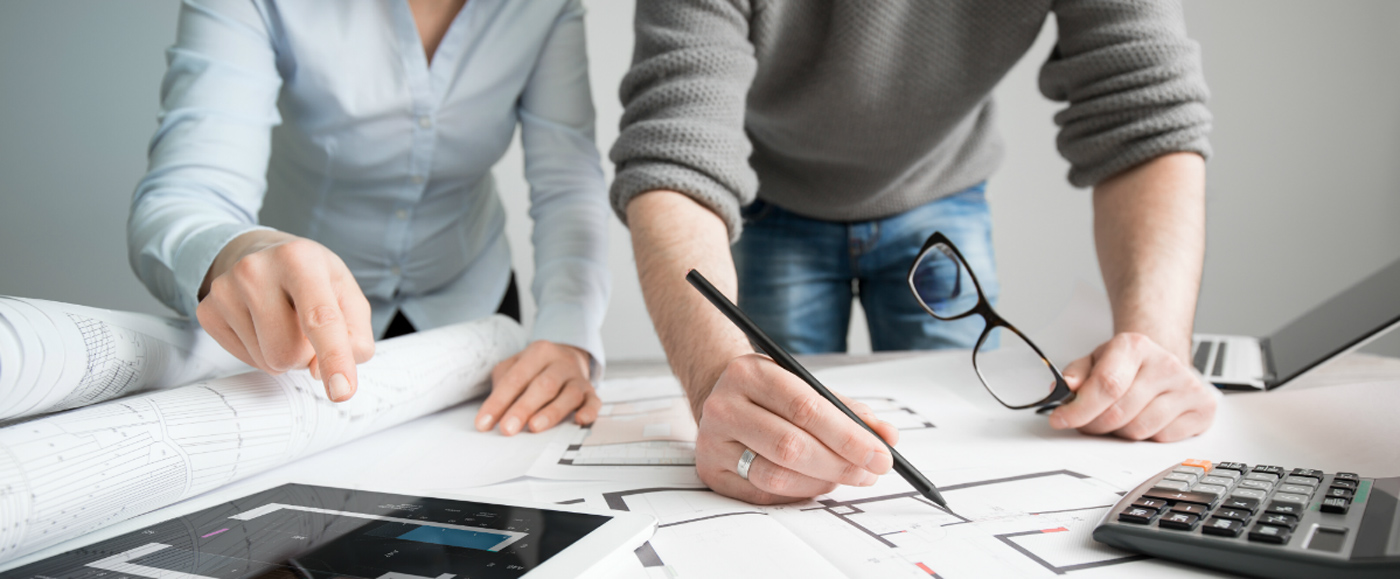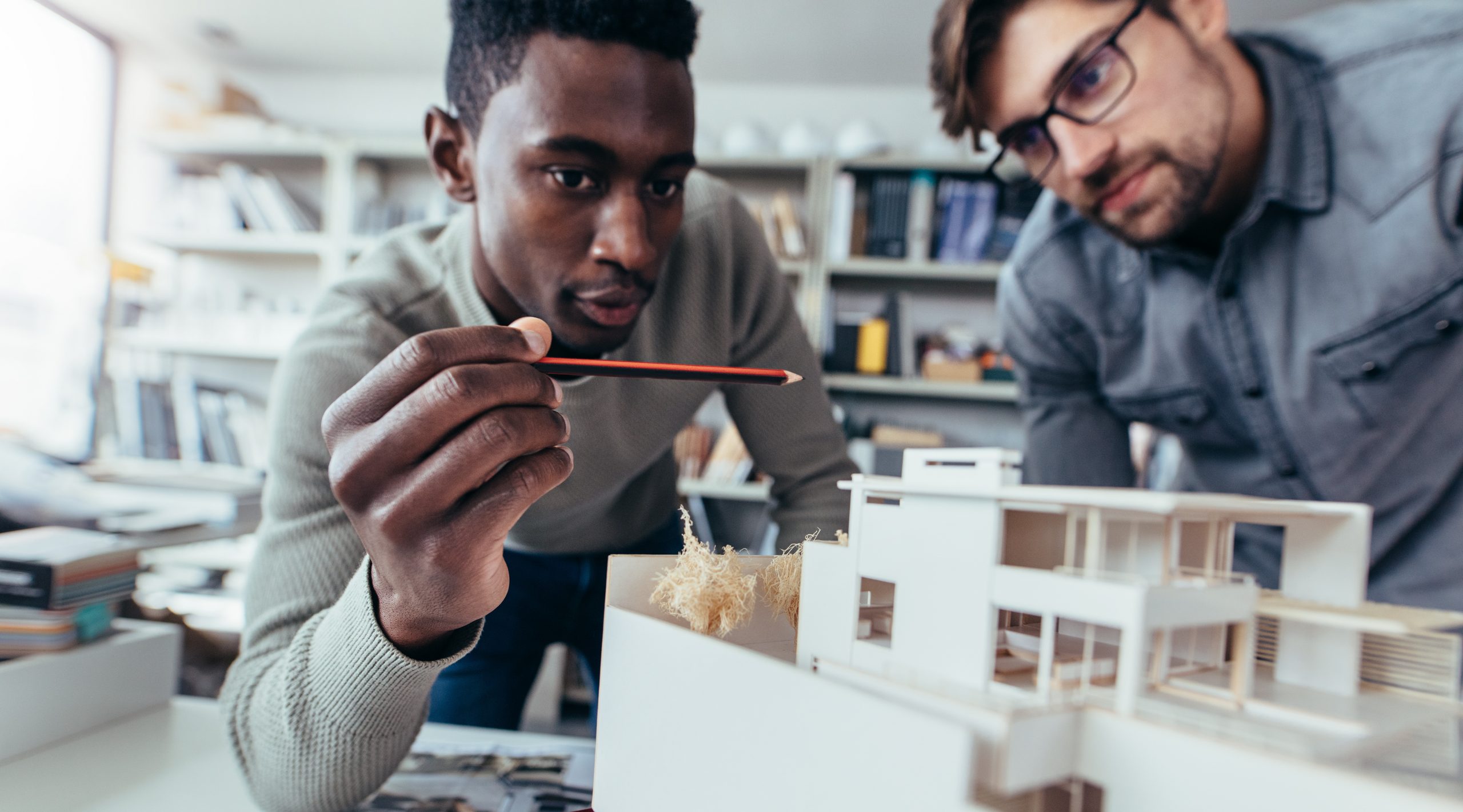Architect Insights on Harmonizing Form and Function
Architect Insights on Harmonizing Form and Function
Blog Article
Understanding the Diverse Profession Paths Available for Aspiring Architect
As an ambitious Architect, you have a globe of occupation paths waiting for you. Whether you're attracted to standard style or the subtleties of sustainable layout, there's a niche that aligns with your rate of interests.
Standard Architecture: Designing Structures and Frameworks
Typical architecture focuses on developing buildings and structures that blend capability with visual appeal. Your designs can mirror social heritage, showcasing neighborhood customs while fulfilling modern-day requirements.
You'll establish abilities in composing, model-making, and site evaluation, permitting you to picture and interact your ideas successfully. Engaging with clients, you'll need to understand their vision and equate it right into possible designs.
Moreover, developing codes and sustainability practices are vital in your job, guaranteeing your structures are environmentally pleasant and risk-free. As you expand in your profession, you'll discover opportunities in residential, industrial, and even remediation tasks, each offering special obstacles. Embracing traditional style leads the way for a satisfying occupation that admires the past while forming the future.
Urban Planning: Shaping Neighborhoods and Public Spaces
As an ambitious Architect, you can play a necessary duty as an urban organizer, transforming how areas work and communicate. By using community engagement approaches, you'll ensure that locals have a voice fit their atmosphere. Plus, incorporating sustainable layout principles will assist develop rooms that not only meet today's demands but likewise safeguard the future.
Function of Urban Planners
While many could believe of architects as the single enthusiasts behind structures, urban coordinators play a crucial function in forming the broader landscape of communities and public areas. They examine land use, zoning regulations, and community needs to develop lasting environments that improve lifestyle. By collaborating with different stakeholders, you'll assist make parks, transportation systems, and property locations that advertise social interaction and accessibility. Urban coordinators likewise concentrate on ecological factors to consider, ensuring that developments integrate eco-friendly areas and support biodiversity. Your knowledge in spatial layout and area characteristics permits you to imagine future development while maintaining social heritage. In this crucial role, you'll directly affect how people experience their environments, making every job a possibility for favorable adjustment.
Community Involvement Methods
Reliable area engagement techniques are crucial for metropolitan organizers to guarantee that the voices of homeowners are listened to and valued in the planning process. To promote significant discussion, you need to focus on open discussion forums and workshops where community members can reveal their ideas and issues. By actively listening and integrating comments, you'll produce areas that show the neighborhood's demands, inevitably leading to even more effective and lasting urban environments.
Sustainable Design Concepts
When developing metropolitan areas, integrating sustainable design principles is crucial for creating settings that grow both environmentally and socially. You need to begin by concentrating on energy effectiveness, using materials that decrease waste and promote recycling. Take into consideration incorporating eco-friendly areas, like yards and parks, to boost biodiversity and enhance air high quality. Promoting walkability and public transport can minimize dependence on cars, cultivating a much healthier area.
Designing with water preservation in mind is additionally essential-- think of rain yards and absorptive surfaces to take care of stormwater. Involving area members during the planning process guarantees that the areas you develop satisfy their needs and urge social interaction. By accepting these principles, you'll add to vivid, lasting urban landscapes that benefit every person.

Landscape Architecture: Developing Lasting Outside Settings
As you check out landscape architecture, you'll uncover necessary design principles that develop attractive and practical exterior areas. Sustainable techniques play a crucial role in making certain these atmospheres thrive while lessening ecological impact. Plus, you'll discover a range of profession opportunities that enable you to make a genuine difference in just how people communicate with nature.
Design Concepts in Landscape
Understanding design concepts in landscape architecture is crucial for developing lasting exterior atmospheres that integrate with nature. You'll need to ponder aspects like balance, range, and percentage to ensure your designs feel natural and inviting. Additionally, pay attention to seasonal adjustments, designing with products that enhance the surroundings year-round.
Sustainable Practices Introduction
Sustainable methods in landscape style not just focus on aesthetic appeals but additionally prioritize environmental health and source preservation. You can develop spaces that advertise soil health and wellness, such as making use of organic products and exercising permaculture concepts. Eventually, these practices assure your designs profit both individuals and the setting for years to come.
Career Opportunities Exploration
With a strong foundation in lasting techniques, landscape design uses a selection of job paths that permit you to make a meaningful impact on the environment. Urban organizers often work together with landscape designers to develop environment-friendly rooms in metropolitan setups, improving city livability. If you're enthusiastic concerning education and learning, think about coming to be a landscape style educator, inspiring future generations.
Lasting Design: Concentrating on Eco-Friendly Practices
As you discover your occupation in architecture, welcoming eco-friendly techniques can set you apart in an affordable field. Lasting design concentrates on developing buildings that lessen environmental effect while boosting owner wellness. By including renewable materials, energy-efficient systems, and lasting building techniques, you'll add to a greener future.
Beginning by acquiring understanding of green certifications like LEED or BREEAM, which can strengthen your credentials. Think about just how natural light, ventilation, and thermal efficiency can maximize layout. Work together with engineers and ecological consultants to introduce solutions that decrease waste and save sources.
Do not neglect the relevance of community participation-- engaging local stakeholders can influence designs that balance with the atmosphere. As clients increasingly focus on sustainability, your expertise in eco-friendly practices will not only draw in jobs but likewise satisfy your enthusiasm for accountable design. Welcome this critical aspect of the profession, and watch your career flourish.
Historic Conservation: Shielding and Recovering Social Heritage
While you begin on your building trip, consider the essential role of historical conservation in preserving our cultural heritage. This field concentrates on the defense and reconstruction of substantial structures, websites, and frameworks that inform the stories of click here now our past. By engaging in historical conservation, you'll help safeguard the building heritage that shapes community identification.
As a historical preservation Architect, you'll evaluate historical relevance and evaluate the condition of frameworks. You'll work very closely with conservationists and chroniclers to ensure genuine repair techniques are used. This job path permits you to blend creative thinking with research study, allowing you to make solutions that respect initial materials and workmanship.
Your job not just adds to sustainability by recycling existing structures but additionally promotes a sense of satisfaction within communities. Accepting this course will assist you end up being a guardian of background, preserving the tales and looks that enrich our lives.
Interior Architecture: Enhancing Indoor Spaces
Historic conservation and indoor architecture both share a commitment to boosting the developed environment, but they concentrate on various aspects. While historic preservation highlights keeping a framework's cultural and historical worth, indoor style zeroes in on enhancing interior rooms for capability and aesthetic appeals.
As an ambitious Architect, you'll find that interior design allows you to blend creative thinking with technological skills. You'll develop areas that not just look good however likewise advertise convenience and efficiency. This area involves understanding how light, color, and materials engage within a room, impacting state of mind and functionality.
You'll service various jobs, from residential homes to commercial offices, making certain that each environment meets the demands of its occupants. By focusing on customer experience, you can change insides right into functional and inspiring areas, making a substantial influence on exactly how people communicate with their surroundings. Accept the chance to enhance indoor settings and form the method individuals live and function.
Industrial Design: Combining Performance With Visual Appeals
Industrial design plays a vital role in creating items that effortlessly mix appearances with capability, making sure that what you utilize daily is not just aesthetically attractive but additionally functional. As a hopeful Architect, you might engage on your own in this field, focusing on designing every little thing from furniture to consumer electronics. Your work entails comprehending user requirements, materials, and making processes, permitting you to produce cutting-edge remedies that improve day-to-day experiences.
In commercial layout, you'll usually work together with marketing experts, engineers, and manufacturers, making certain that your designs are not only attractive however also practical. You'll find out to balance type and feature, focusing on functionality without giving up style. By developing your abilities in laying out, 3D modeling, and prototyping, you'll be well-equipped to bring your concepts to life. This career path provides a dynamic atmosphere where imagination fulfills usefulness, making it a satisfying selection for architects interested in shaping the items of tomorrow.
Regularly Asked Concerns
What Educational Credentials Do I Need to Come To Be an Engineer?
To come to be a designer, you'll need a specialist degree in architecture, usually a Bachelor's or Master's. Furthermore, you'll have to finish an internship and pass the Architect Registration Assessment to practice legally.
Exist Certification Needs for Different Building Career Paths?
Yes, there're qualification demands for numerous architectural courses. Architect. You'll need to pass exams, complete teaching fellowships, and sometimes seek specialized training, depending on your picked focus, like landscape architecture, city style, or historical preservation
What Software Program Skills Are Vital for Architects Today?

Exactly How Can I Gain Practical Experience While Studying Style?
You can get useful experience by interning at building firms, taking part in design competitors, volunteering for area jobs, or collaborating with classmates on real-world tasks. These opportunities boost your skills and construct important links in the industry.
What Job Opportunities Exist Outdoors Standard Style Firms?
You can check out numerous job possibilities outside standard architecture companies, like urban planning, interior decoration, landscape style, building management, realty growth, or even functions in sustainability consulting. Each deals unique difficulties and benefits.
Whether you're attracted to traditional design or visit our website the subtleties of sustainable design, there's a particular niche that straightens with your rate of interests.When making urban spaces, integrating lasting design concepts is essential for producing settings that thrive both ecologically and socially.As you check out landscape style, you'll uncover essential style concepts that develop useful and attractive outdoor areas.Comprehending layout concepts in landscape style is essential for creating sustainable outdoor atmospheres that balance with nature.In industrial style, you'll commonly work together with manufacturers, marketers, and engineers, making certain that your designs are not just beautiful but additionally practical.
Report this page